-
Happy Birthday ICMag! Been 20 years since Gypsy Nirvana created the forum! We are celebrating with a 4/20 Giveaway and by launching a new Patreon tier called "420club". You can read more here.
-
Important notice: ICMag's T.O.U. has been updated. Please review it here. For your convenience, it is also available in the main forum menu, under 'Quick Links"!
You are using an out of date browser. It may not display this or other websites correctly.
You should upgrade or use an alternative browser.
You should upgrade or use an alternative browser.
Industrial Hemp in Oregon
- Thread starter socioecologist
- Start date
I think Bayer is a distributor of their products in some markets. Basically a distribution/marketing agreement.
While the "do it yourself at home" instructions will not yield as consistent of a product or an unwavering dose, it will do the trick and get you between 10mg-20mg / kg of body weight--I'd recommend titrating as necessary to reduce symptoms, but I'm not that kind of doctor.
A simple quick wash ethanol extraction followed by air evaporation will give you what you need. The resulting oil will be 40%-55% CBD by weight with the varieties you have. You'll need about 1g of oil per day to hit your mark at those concentrations, but it would fit in two larger pills without trouble. Keep in mind that you will need between 10g-15g of raw flower material per day to achieve this (or 12 pounds per year).
Thank you for this, S. These are about the best and simplest directions I have yet found. Very useful. Gets my thinking into the right order of magnitude.
They still present a big barrier for us home growers without commercial ambitions. 12 pounds a season is a lot for me and I don't know if I can grow or process that much. Most other people are even less capable than I am. That means most people including me, will go into the market for whatever they can get or afford. The products I have seen are under dosed and vastly overpriced and suspect in other ways.
Even if you disregard the risks of a lack of clinical trials that market right now seems grossly extortionate. Perhaps that is a simple supply problem and will eventually correct. But then you have various governments throwing up all sorts of market distortions and mythology as well as ever larger commercial operations soaking people for maximum profits.
PDX Dopesmoker
Active member
…(or 12 pounds per year).
Thats my kind of diet!
I should warn anyone going into that kind of an edible dosage regime using dank weed and QWET extraction that the odor in the oil might leak through to your flatulence. I used to tell people that I was channeling the spirits of my long lost pet ferrets when it started to smell skunky around me. A few people actually bought it. I think the RSO technique with hot alcohol recovery minimized the loudness if that kind of thing bothers you.
Thanks again for keeping us up to date, socioecologist. This is one of my favorite threads on the board.
socioecologist
Member
Bayer was the distributor of Sativex (the 1:1 mix) in the US, but they and GW severed that deal (mutually) late last year.
Here's a link to field footage from about 2.5 weeks ago: oregoncbdseeds.com/oregoncbdjune2017.m4v
Plants are getting big...we're about a week away from the start of flowering for our early photoperiod plants, which means compliance testing the first week or so in August. Weeds all got knocked down in this section yesterday and I swear the plants had put on another 6" of growth in the three days between the picture below and yesterday. This is definitely the best time of the season for me!
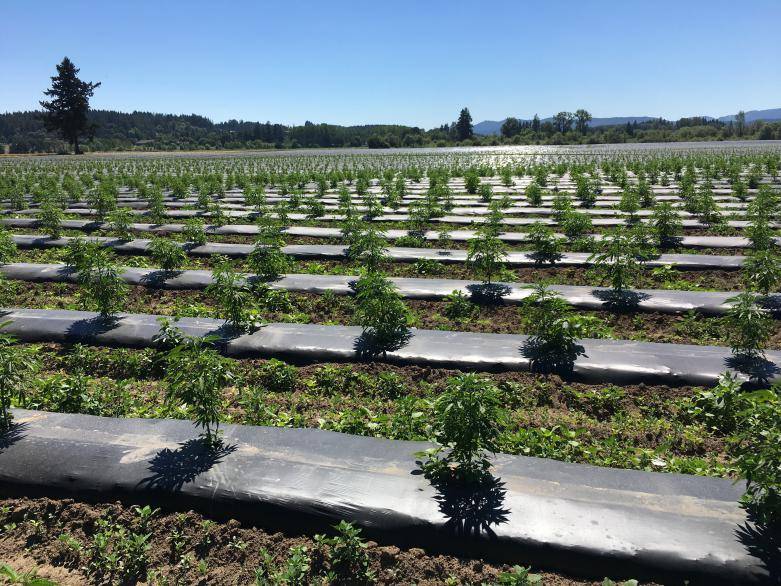
Here's a decent sized experimental plant from our 2018 seed lines chugging away. Mom was selected from a very large pool of ACDC x Neville's Haze F2 and crossed to our ERB line. More details on this as they start to do their thing, but we expect it to take 8-9 weeks and should produce massive resin balls--the epitome of hybrid vigor. Testing the progeny from 9 separate moms for this line to find the best to release next year.
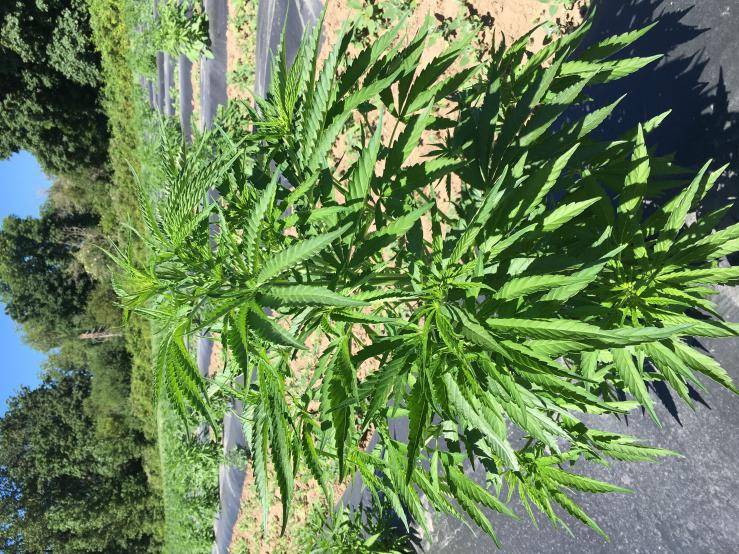
A shot of our type IV finishing up.
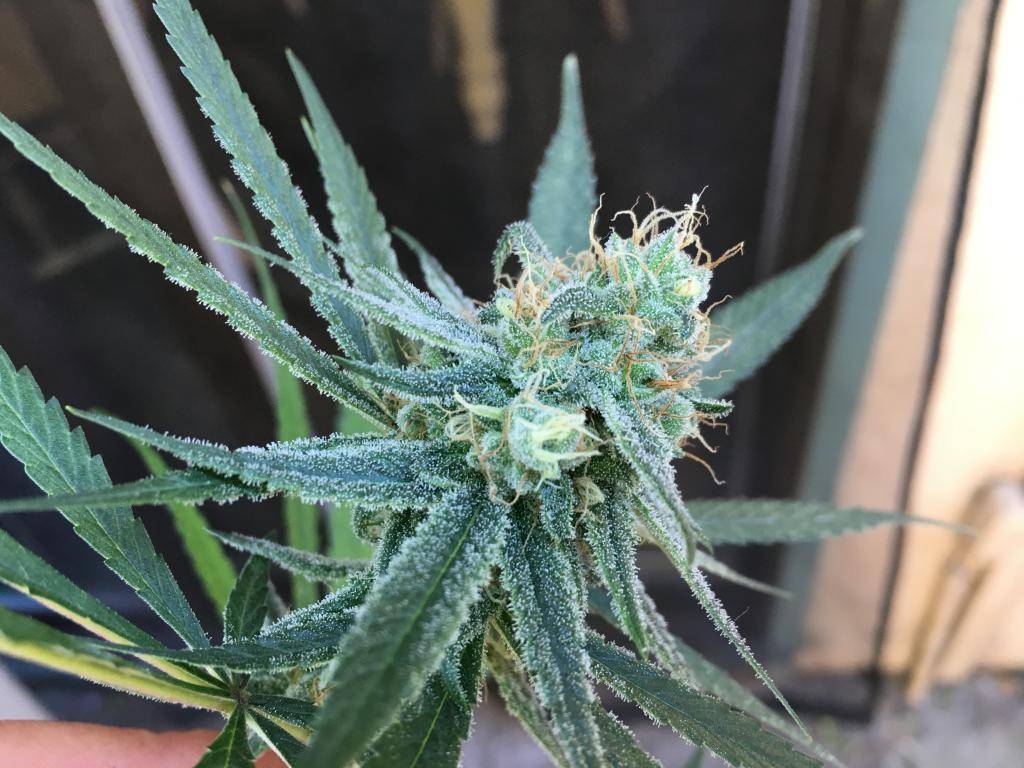
Here's a link to field footage from about 2.5 weeks ago: oregoncbdseeds.com/oregoncbdjune2017.m4v
Plants are getting big...we're about a week away from the start of flowering for our early photoperiod plants, which means compliance testing the first week or so in August. Weeds all got knocked down in this section yesterday and I swear the plants had put on another 6" of growth in the three days between the picture below and yesterday. This is definitely the best time of the season for me!
Here's a decent sized experimental plant from our 2018 seed lines chugging away. Mom was selected from a very large pool of ACDC x Neville's Haze F2 and crossed to our ERB line. More details on this as they start to do their thing, but we expect it to take 8-9 weeks and should produce massive resin balls--the epitome of hybrid vigor. Testing the progeny from 9 separate moms for this line to find the best to release next year.
A shot of our type IV finishing up.
AgentPothead
Just this guy, ya know?
This is such a great thread, thanks for posting it.
R
Robrites
Death of Oregon hemp bills considered “mystery”
Death of Oregon hemp bills considered “mystery”
Hemp legislation creating a research pilot program and a crop commission in Oregon has died despite strong support and no public objections.
SALEM — Bills that aimed to bring industrial hemp into the mainstream of Oregon agriculture have died despite lacking strong opposition or a hefty price tag.
Hemp seed could be tested for purity by Oregon State University under House Bill 2371, which would also have brought the crop under an official OSU research pilot program.
A new industrial hemp commission devoted to raising funds for research and promotion would have been created under House Bill 2372, similarly to several other Oregon agricultural products.
Both proposals unanimously passed the House Agriculture and Natural Resources Committee in April but then languished in the Joint Ways and Means Committee until the end of the 2017 legislative session.
“It’s the biggest mystery I’ve ever bumped into in this building,” said Rep. Carl Wilson, R-Grants Pass, the bills’ chief sponsor.
The work of the Oregon Industrial Hemp Commission would have been paid by grower assessments, while the research and seed testing program would have “minimal impact” on OSU and an “indeterminate” cost for the Oregon Department of Agriculture, which could charge fees to hemp farmers.
“There was zero opposition and some pretty substantial reasons why they should pass,” said Matt Cyrus, a hemp grower from Deschutes County who lobbied for the legislation.
Oregon’s hemp industry finds itself in a “slight gray area” under federal law, but HB 2371 would have brought OSU research activities into alignment with federal language in the 2014 Farm Bill, which allows some hemp production, he said.
“It was more of a technical housekeeping bill,” Cyrus said. “It was a fairly important bill for the industry.”
Without the proposal’s approval, OSU will be constrained in communications and advice to hemp growers, said Jay Noller, head of the university’s crop and soil science department.
The university can still conduct research without the bill, but it’s not permitted to provide Extension services to hemp producers, he said.
“We’re kind of hamstrung here,” Noller said.
If HB 2371 had passed, ODA-registered hemp producers would have automatically become OSU research program participants, giving OSU greater leeway to work with them under federal law, he said.
“It means we’ll be waiting until things get cleaned up,” Noller said.
When asked about the hemp bills’ failure, the co-chair of the Joint Ways and Means Committee, Sen. Richard Devlin, D-Tualatin, said that fewer than “one-in-three bills were able to move through the committee and pass both chambers, due to time constraints and other factors.”
Wilson, the bills’ chief sponsor, said he met with leaders of the Ways and Means Committee, as well as Gov. Kate Brown, to explain the significance of the legislation.
“I am absolutely stunned by this development,” Wilson said. “Everybody in this place knew what this was about and what it would do. I can’t figure out who the enemy was.”
While the industrial hemp commission would have been “nice to have,” the statutory language changes in HB 2371 are imperative to bring Oregon’s hemp industry in line with federal requirements, he said.
Wilson said he never received any feedback about why the latter bill shouldn’t be passed and plans to re-introduce it in 2018.
“I plan to bring this one back,” he said.
Courtney Moran, attorney and lobbyist for the Oregon Industrial Hemp Farmers Association, said she was equally mystified by the bills’ demise.
Members of a natural resources subcommittee of the Joint Ways and Means Committee expected to consider the bill, and leaders of the full committee said they expected it to be reviewed, Moran said.
“We did everything we possibly could, I feel,” she said. “We’re disappointed in the failure of the co-chairs to recognize the importance of the bills.”
http://www.wallowa.com/wcc/capital-bureau/20170712/death-of-oregon-hemp-bills-considered-mystery
Death of Oregon hemp bills considered “mystery”
Hemp legislation creating a research pilot program and a crop commission in Oregon has died despite strong support and no public objections.
SALEM — Bills that aimed to bring industrial hemp into the mainstream of Oregon agriculture have died despite lacking strong opposition or a hefty price tag.
Hemp seed could be tested for purity by Oregon State University under House Bill 2371, which would also have brought the crop under an official OSU research pilot program.
A new industrial hemp commission devoted to raising funds for research and promotion would have been created under House Bill 2372, similarly to several other Oregon agricultural products.
Both proposals unanimously passed the House Agriculture and Natural Resources Committee in April but then languished in the Joint Ways and Means Committee until the end of the 2017 legislative session.
“It’s the biggest mystery I’ve ever bumped into in this building,” said Rep. Carl Wilson, R-Grants Pass, the bills’ chief sponsor.
The work of the Oregon Industrial Hemp Commission would have been paid by grower assessments, while the research and seed testing program would have “minimal impact” on OSU and an “indeterminate” cost for the Oregon Department of Agriculture, which could charge fees to hemp farmers.
“There was zero opposition and some pretty substantial reasons why they should pass,” said Matt Cyrus, a hemp grower from Deschutes County who lobbied for the legislation.
Oregon’s hemp industry finds itself in a “slight gray area” under federal law, but HB 2371 would have brought OSU research activities into alignment with federal language in the 2014 Farm Bill, which allows some hemp production, he said.
“It was more of a technical housekeeping bill,” Cyrus said. “It was a fairly important bill for the industry.”
Without the proposal’s approval, OSU will be constrained in communications and advice to hemp growers, said Jay Noller, head of the university’s crop and soil science department.
The university can still conduct research without the bill, but it’s not permitted to provide Extension services to hemp producers, he said.
“We’re kind of hamstrung here,” Noller said.
If HB 2371 had passed, ODA-registered hemp producers would have automatically become OSU research program participants, giving OSU greater leeway to work with them under federal law, he said.
“It means we’ll be waiting until things get cleaned up,” Noller said.
When asked about the hemp bills’ failure, the co-chair of the Joint Ways and Means Committee, Sen. Richard Devlin, D-Tualatin, said that fewer than “one-in-three bills were able to move through the committee and pass both chambers, due to time constraints and other factors.”
Wilson, the bills’ chief sponsor, said he met with leaders of the Ways and Means Committee, as well as Gov. Kate Brown, to explain the significance of the legislation.
“I am absolutely stunned by this development,” Wilson said. “Everybody in this place knew what this was about and what it would do. I can’t figure out who the enemy was.”
While the industrial hemp commission would have been “nice to have,” the statutory language changes in HB 2371 are imperative to bring Oregon’s hemp industry in line with federal requirements, he said.
Wilson said he never received any feedback about why the latter bill shouldn’t be passed and plans to re-introduce it in 2018.
“I plan to bring this one back,” he said.
Courtney Moran, attorney and lobbyist for the Oregon Industrial Hemp Farmers Association, said she was equally mystified by the bills’ demise.
Members of a natural resources subcommittee of the Joint Ways and Means Committee expected to consider the bill, and leaders of the full committee said they expected it to be reviewed, Moran said.
“We did everything we possibly could, I feel,” she said. “We’re disappointed in the failure of the co-chairs to recognize the importance of the bills.”
http://www.wallowa.com/wcc/capital-bureau/20170712/death-of-oregon-hemp-bills-considered-mystery
socioecologist
Member
The failure of HB 2371 and HB 2372 this session is a low point for the year so far. That's the kind of bureaucratic bullshit that can sap an industry's growth potential...I think we'll be fine, but it's set us all back at least 8 months (both bills will be reintroduced in the short session next winter). Instead of having a certified seed system in place in time for 2018, it won't happen now until 2019.
gorilla ganja
Well-known member
That's to bad, more red tape B.S.
I was wondering if you hand plant those fields or do you have a machine that plants into the plastic mulch? Also what is the spacing on those and have you played around with different spacing?
Love this thread, thanks so much for sharing.
Peace GG
I was wondering if you hand plant those fields or do you have a machine that plants into the plastic mulch? Also what is the spacing on those and have you played around with different spacing?
Love this thread, thanks so much for sharing.
Peace GG
socioecologist
Member
That's to bad, more red tape B.S.
I was wondering if you hand plant those fields or do you have a machine that plants into the plastic mulch? Also what is the spacing on those and have you played around with different spacing?
Love this thread, thanks so much for sharing.
Peace GG
We hand planted last year on 8' centers. This year, our "early" finishing photoperiod lines were planted using a waterwheel planter on 4' centers in row (6' between rows). Our auto flowering hemp plants were planted on 2' centers. We have one wheel for the planter that is 4', and another wheel that is adjustable from 1' to 8' depending on the number and placement of spikes. It's a great approach and works well (near perfect plant survival), but is slow--each 1200 ft. row takes about 15 minutes to plant on 4' centers. That's about 1.3 hours per acre at our field. The planter is limited in its use by wet ground and the physical capacity of planters. It's exhausting: hard on the knees, back, and especially hands.
Our plan for next year is to direct seed using a custom built implement that will burn a hole in the plastic mulch, plant a seed, bury it, water it in, then gently compress the soil around the seed. Ours will plant 3 rows at a time, which (if I remember right) works out to about 9 acres per hour. Direct seeding will allow us to get in the ground much earlier in the year. Our plan for 2018 revolves around auto flowering plants on 2' centers in-row, which should give us at least 2 harvests if the weather cooperates.
socioecologist
Member
I sent out our letter to seed and start buyers yesterday with recommendations on THC sample timing with ODA. One of the bits I included was this chart on total daylight in Oregon:
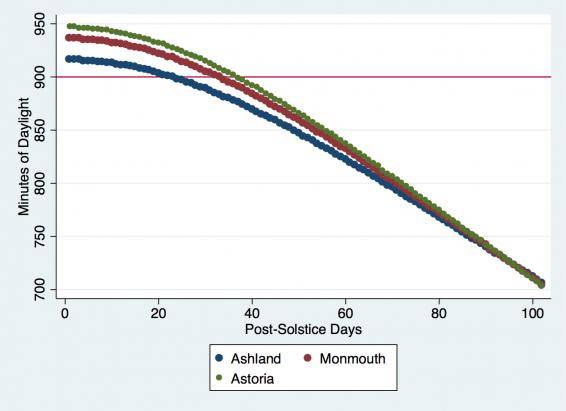
Oregon ranges from 42N around Ashland to 46N in Astoria. The farther north you are, the more hours of daylight you will have and the longer your vegetative growth period will be. There is a full two-week difference between Ashland and Astoria with respect to hitting the 900 minute mark of daylight (which is when our "early" varieties trigger).
Oregon ranges from 42N around Ashland to 46N in Astoria. The farther north you are, the more hours of daylight you will have and the longer your vegetative growth period will be. There is a full two-week difference between Ashland and Astoria with respect to hitting the 900 minute mark of daylight (which is when our "early" varieties trigger).
Last edited:
socioecologist
Member
Too much information to report, as tends to happen in the production season. Our 2017 seed lines flowered on cue, some finishing in mid-August. Our R&D field was the site of field trials on our 2018 lines and they proved even better than our last release. We couldn't be happier; great disease resistance, dense colas, and incredible resin. The entire field is done now and needs to be harvested (we've been harvesting around the clock for a month now...). Beyond stoked that the breeding invention works so well. 25% of each variety matures each week in September with the entire lot needing to be out of the field by month's end. Here's a shot from late August:
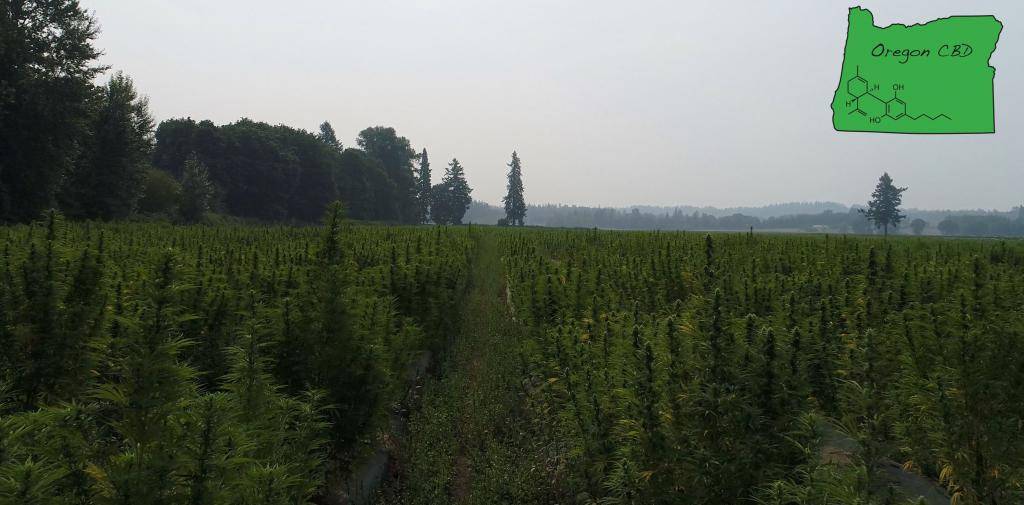
As alluded to in previous posts, we developed the first Type IV cannabis plant (pure CBG) we know of outside of GW. The finished flowers on these ladies are less than 0.1% THC, making them internationally legal. We call her "Stem Cell CBG". With the right genetics, the hemp revolution allows you to compete internationally. The market size is unfathomable. Our breeding program has already moved forward with outcrossing projects to increase resin, create early varieties, and have another industry first--autoflowering CBG plants. It's hard not to have a good time at work these days, despite them being inordinately long.
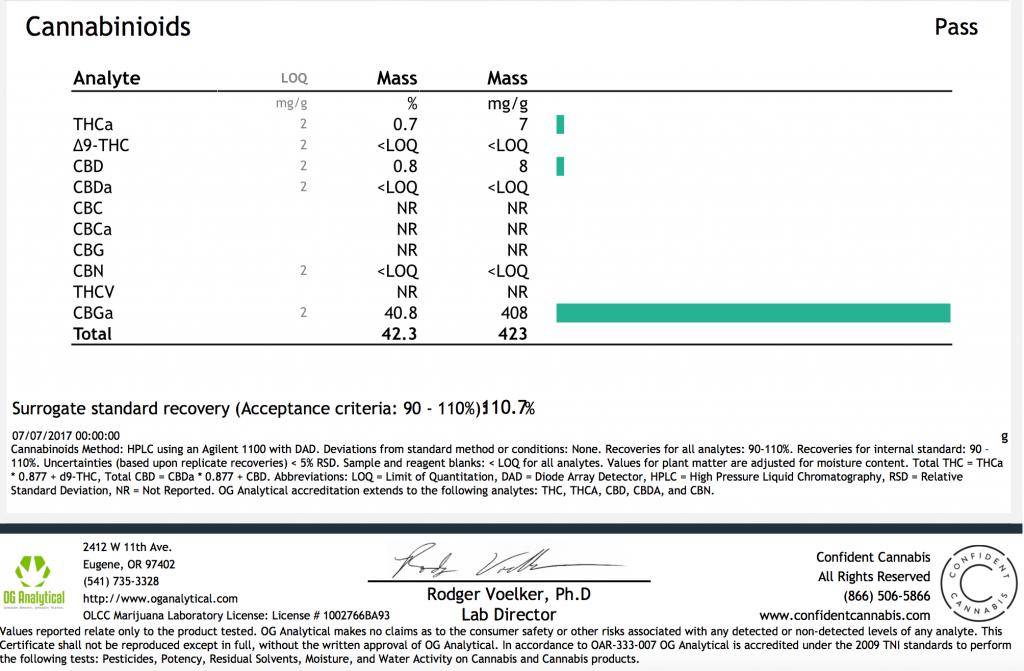
As alluded to in previous posts, we developed the first Type IV cannabis plant (pure CBG) we know of outside of GW. The finished flowers on these ladies are less than 0.1% THC, making them internationally legal. We call her "Stem Cell CBG". With the right genetics, the hemp revolution allows you to compete internationally. The market size is unfathomable. Our breeding program has already moved forward with outcrossing projects to increase resin, create early varieties, and have another industry first--autoflowering CBG plants. It's hard not to have a good time at work these days, despite them being inordinately long.
gorilla ganja
Well-known member
Finally a update 
Field looks fantastic. Congrats on the CBG dominate strain. I think it is an under appreciated cannabinioid.
Keep doing what your doing.
Peace GG

Field looks fantastic. Congrats on the CBG dominate strain. I think it is an under appreciated cannabinioid.
Keep doing what your doing.
Peace GG
PDX Dopesmoker
Active member
Does that thing really say 42.3% cannabinoids? How in hell is that even possible, did you figure out how to clone a chunk of hash? That strain name is suspicious, are you using some sorta biomedical science flimflammery to push cannabinoid content to astonishing new levels?



